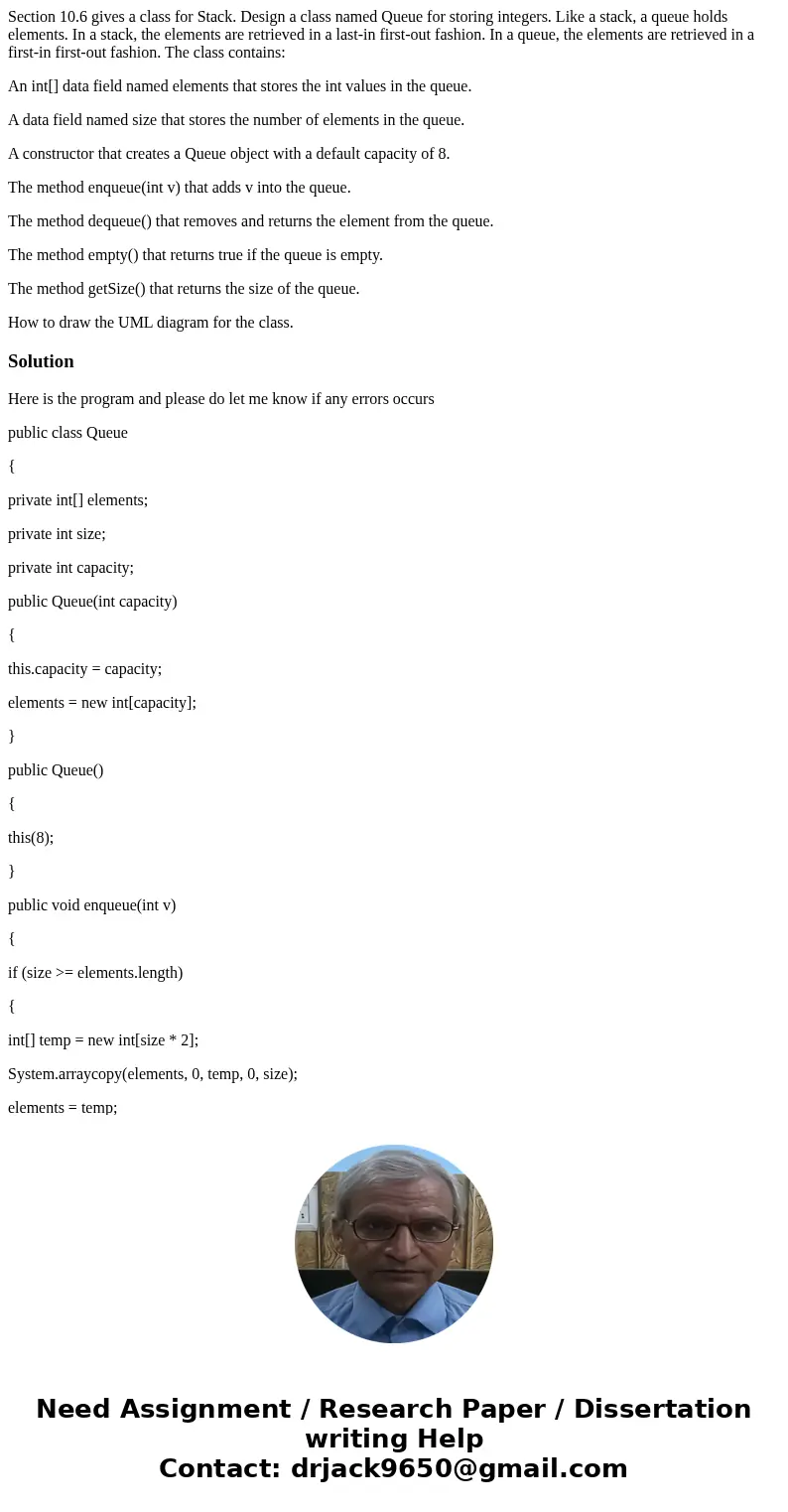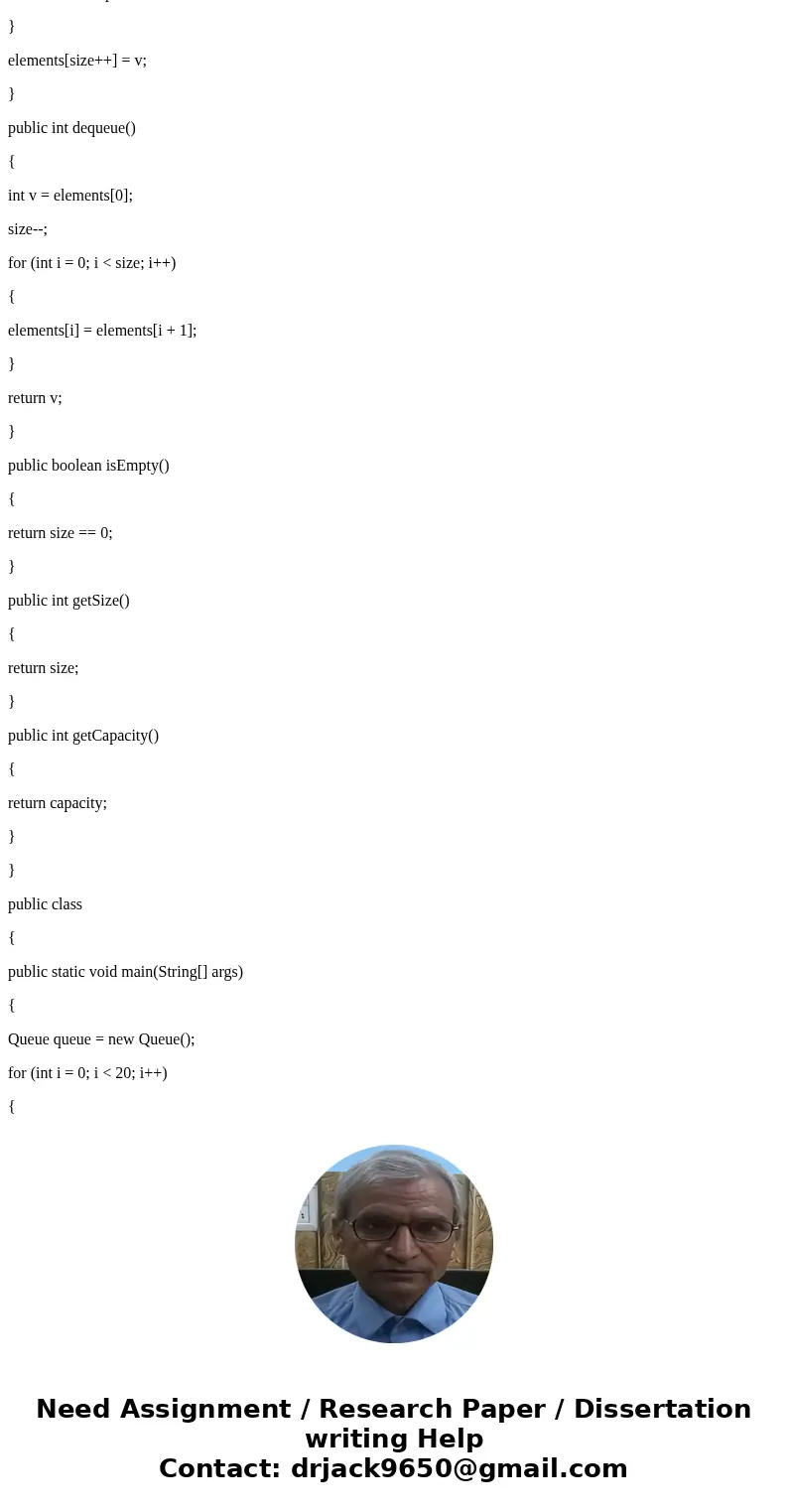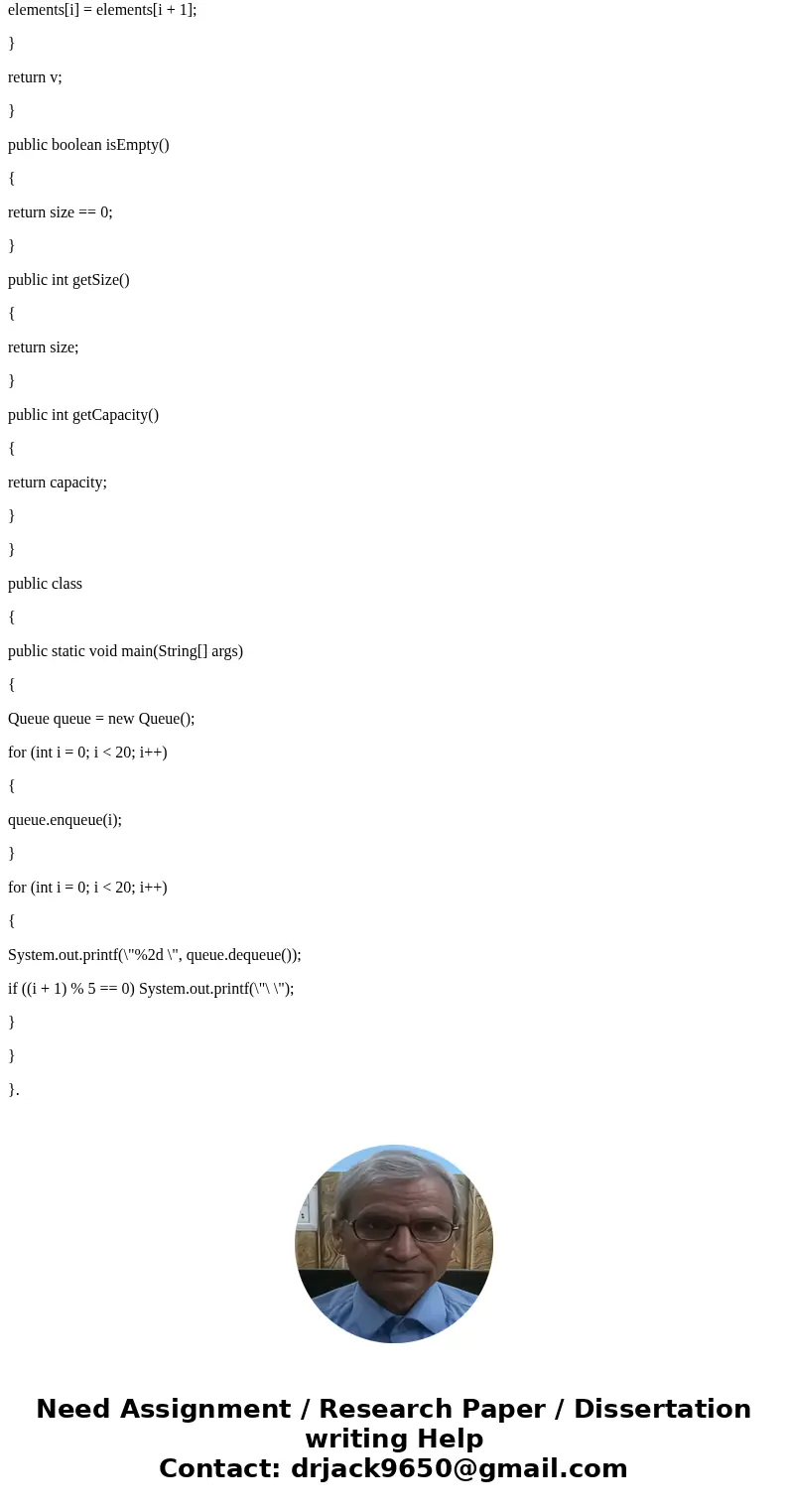Section 106 gives a class for Stack Design a class named Que
Section 10.6 gives a class for Stack. Design a class named Queue for storing integers. Like a stack, a queue holds elements. In a stack, the elements are retrieved in a last-in first-out fashion. In a queue, the elements are retrieved in a first-in first-out fashion. The class contains:
An int[] data field named elements that stores the int values in the queue.
A data field named size that stores the number of elements in the queue.
A constructor that creates a Queue object with a default capacity of 8.
The method enqueue(int v) that adds v into the queue.
The method dequeue() that removes and returns the element from the queue.
The method empty() that returns true if the queue is empty.
The method getSize() that returns the size of the queue.
How to draw the UML diagram for the class.
Solution
Here is the program and please do let me know if any errors occurs
public class Queue
{
private int[] elements;
private int size;
private int capacity;
public Queue(int capacity)
{
this.capacity = capacity;
elements = new int[capacity];
}
public Queue()
{
this(8);
}
public void enqueue(int v)
{
if (size >= elements.length)
{
int[] temp = new int[size * 2];
System.arraycopy(elements, 0, temp, 0, size);
elements = temp;
}
elements[size++] = v;
}
public int dequeue()
{
int v = elements[0];
size--;
for (int i = 0; i < size; i++)
{
elements[i] = elements[i + 1];
}
return v;
}
public boolean isEmpty()
{
return size == 0;
}
public int getSize()
{
return size;
}
public int getCapacity()
{
return capacity;
}
}
public class
{
public static void main(String[] args)
{
Queue queue = new Queue();
for (int i = 0; i < 20; i++)
{
queue.enqueue(i);
}
for (int i = 0; i < 20; i++)
{
System.out.printf(\"%2d \", queue.dequeue());
if ((i + 1) % 5 == 0) System.out.printf(\"\ \");
}
}
}.



 Homework Sourse
Homework Sourse